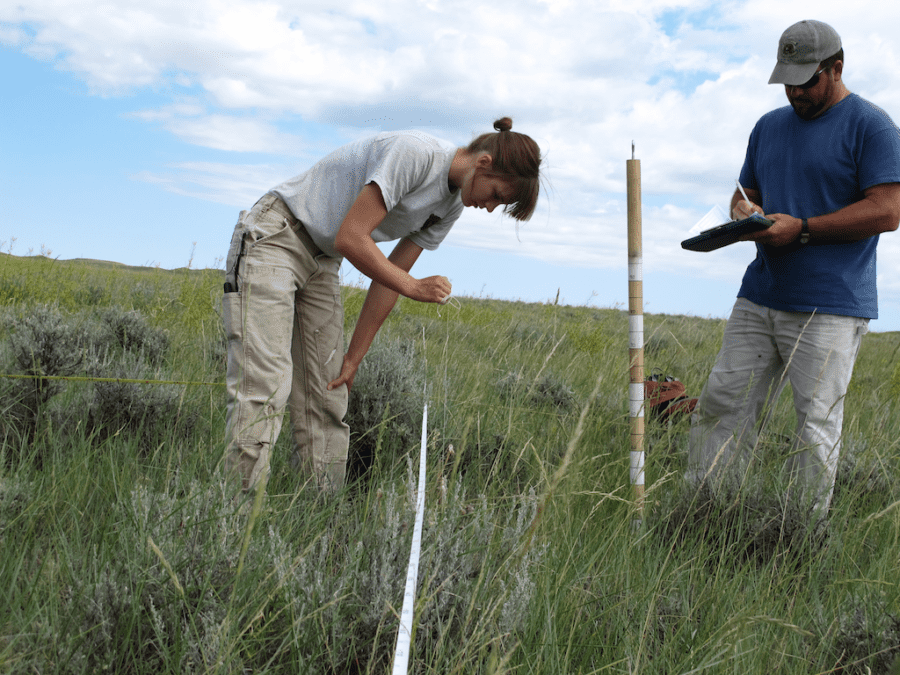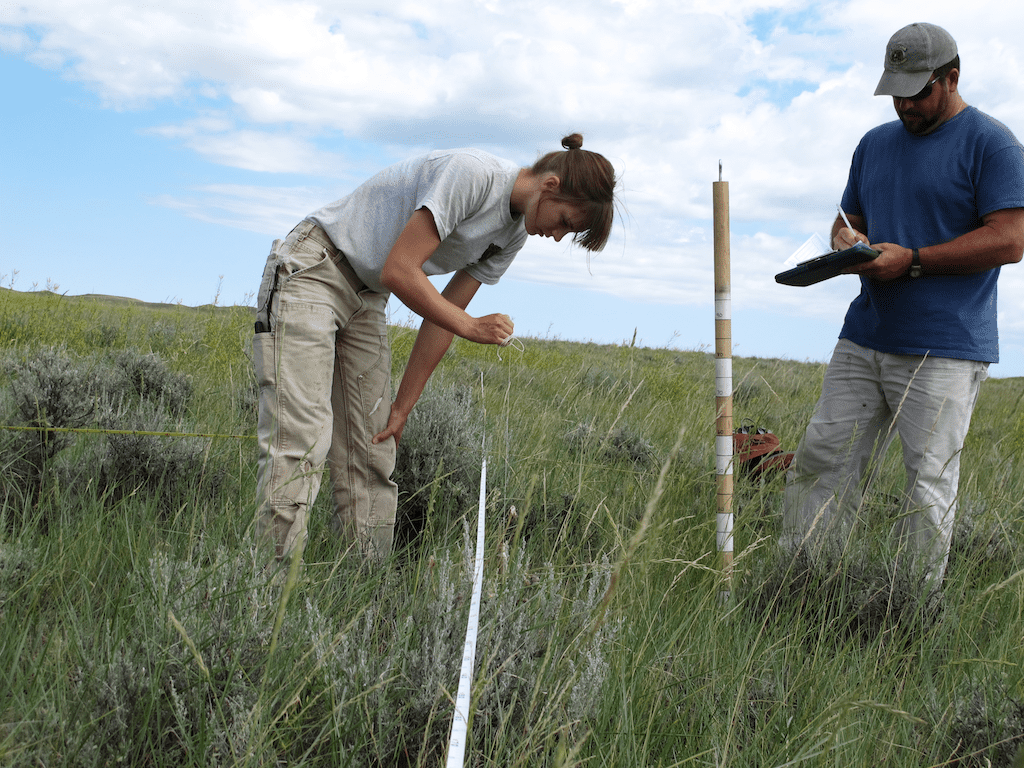
Webinar: Effects Of Livestock Grazing On Sage Grouse Nesting Ecology
Host: NRCS West National Technology Support Center

Host: NRCS West National Technology Support Center

Researchers recommend waiting to measure grass height until after the predicted hatch date for all nests. Photo by Joe Smith.

New research will be presented that puts the role of grazing management in perspective when compared to other environmental factors and threats. Photo by Joe Smith (webinar presenter)
Click here to view the On-Demand Replay!
When: Wednesday, February 7, 2018 | 10:00 – 11:00 am PST
Host: NRCS West National Technology Support Center
Presenter: Dr. Joe Smith, University of Montana
Description: Livestock grazing has been suggested as a contributing factor to sage-grouse habitat degradation, primarily since grazing can directly reduce vegetation cover believed to be important for concealing the birds’ nests. Consequently, identifying ways to manage livestock that promotes high-quality nesting cover for sage-grouse has been a priority across the range.
Yet, until recently, little research existed that tested these hypothesized relationships between grazing and sage-grouse. In 2011, University of Montana (UM), Montana Fish, Wildlife & Parks, USDA Natural Resources Conservation Service, and other partners initiated a 10-year field study in central Montana to evaluate outcomes of rotational grazing systems designed to improve habitat for sage-grouse. The goal of the study was to inform decision-making for conservation practices that benefit the bird and the herd.
In this webinar, Joe Smith, a post-doctoral researcher at UM who helped run the field study during its inaugural years and analyzed nesting data for his dissertation, will present a summary of the study’s findings to date regarding sage-grouse nesting ecology and effects of rest-rotation grazing on grouse and range vegetation. Dr. Smith will also present results of a broader analysis comprising >800 sage-grouse nests from three independent studies across the West evaluating the relationship between grass height and nest survival. Findings provide important insights and considerations for future research and management, and help put the role of grazing management in perspective when compared to other environmental factors and threats.
Additional Resources:
Taking the Bias Out of Sage Grouse Nesting Studies – SGI’s most recent Science to Solutions shows that grass height may not be as crucial to nesting success as previously thought, since hatched nests are measured later than failed nests.
Grazing Management In Perspective: A Compatible Tool For Sage Grouse Conservation – This Science to Solutions explains how — done right — livestock grazing may help conserve sage grouse habitat by keeping working ranches profitable and sustainable.